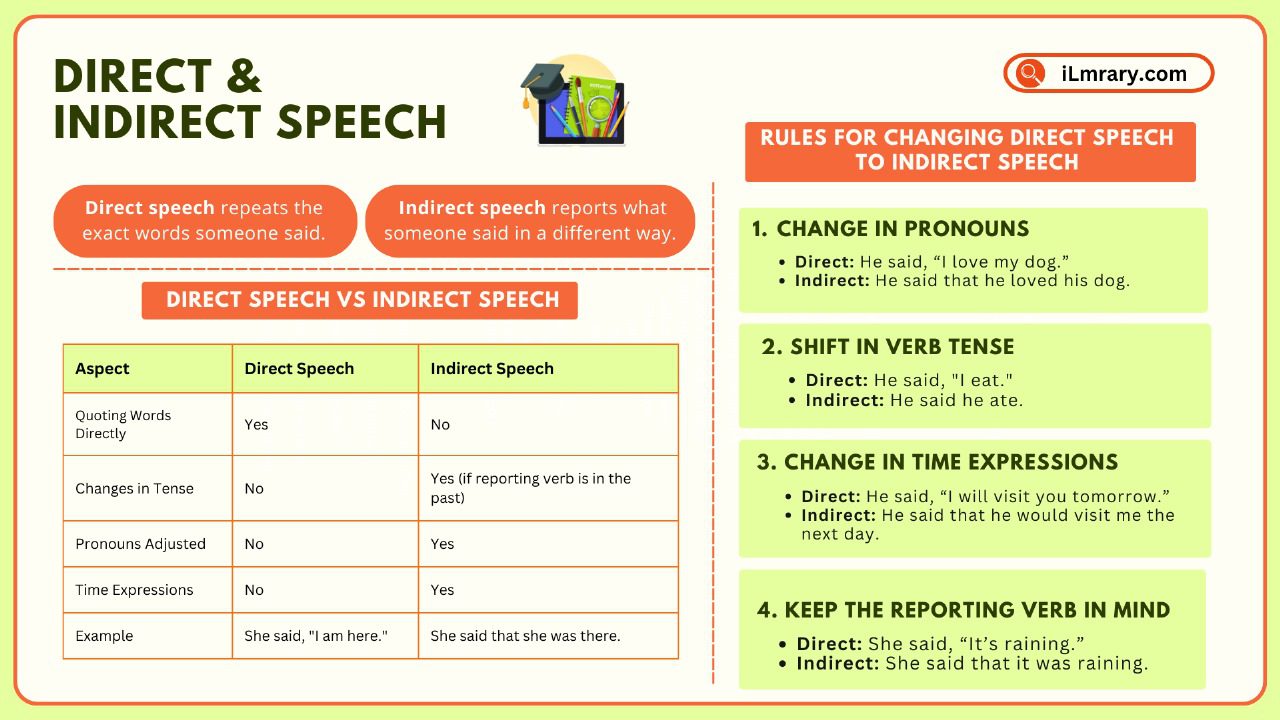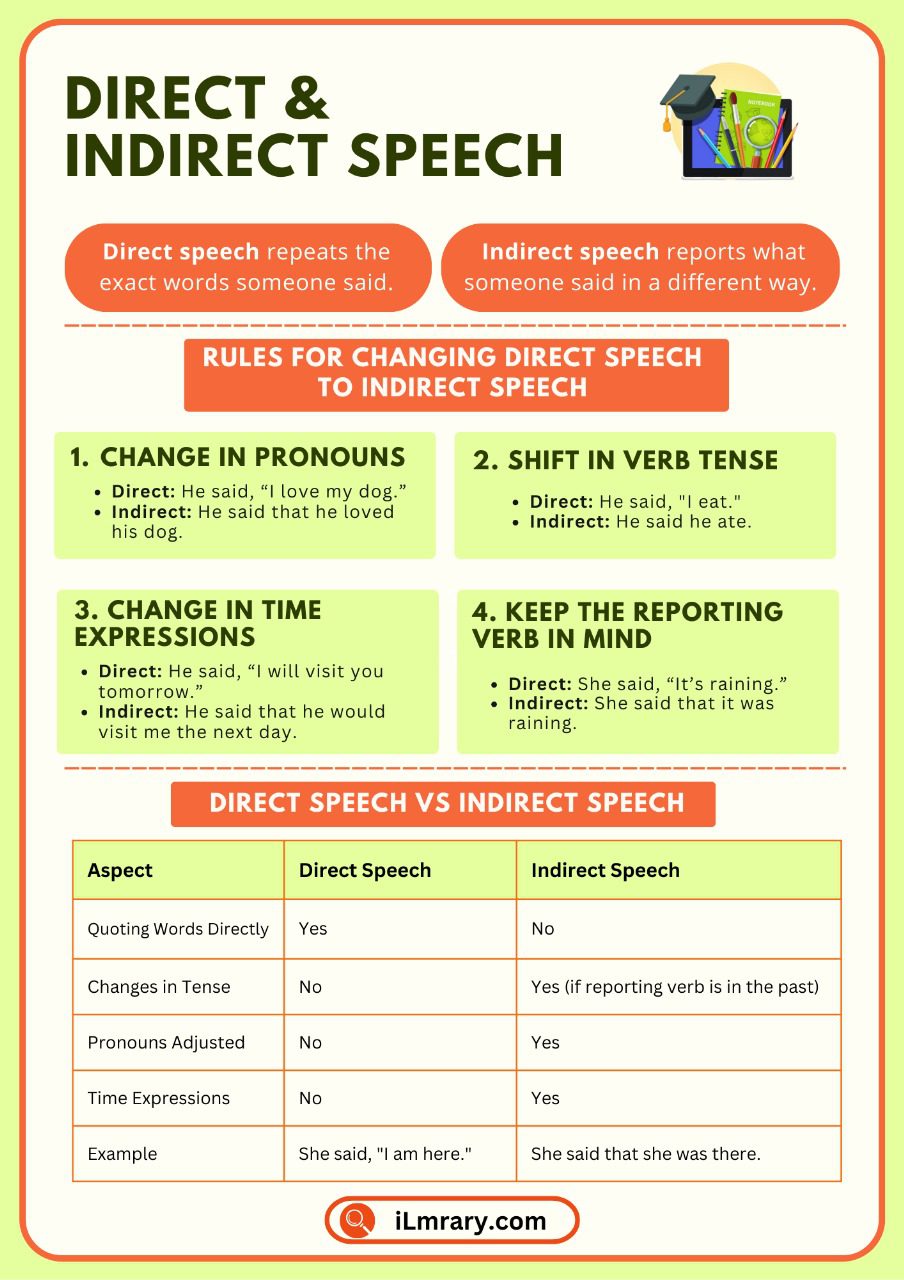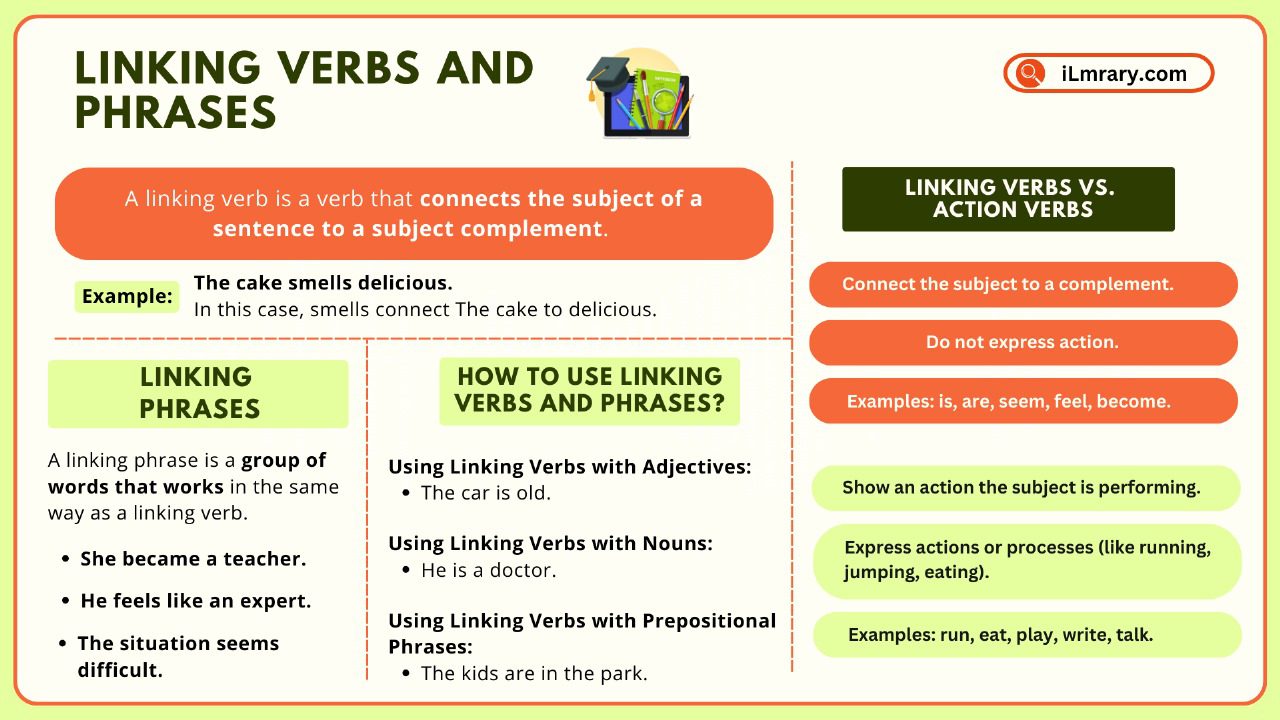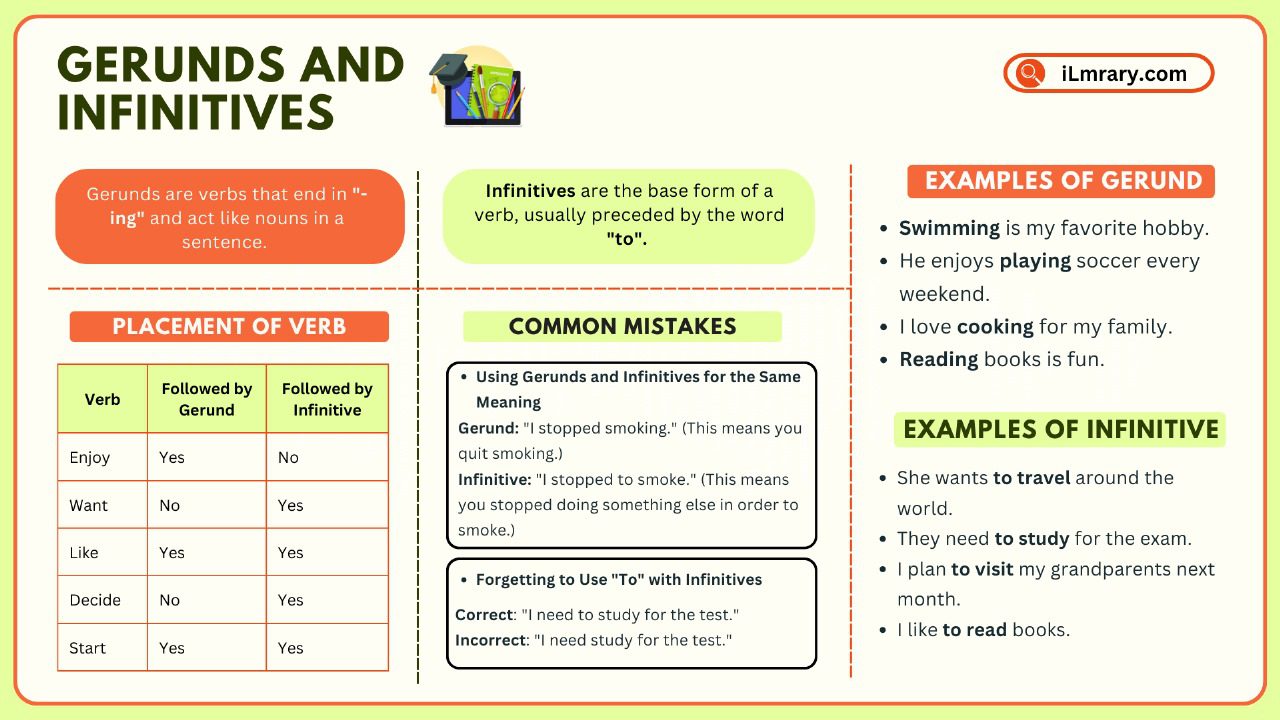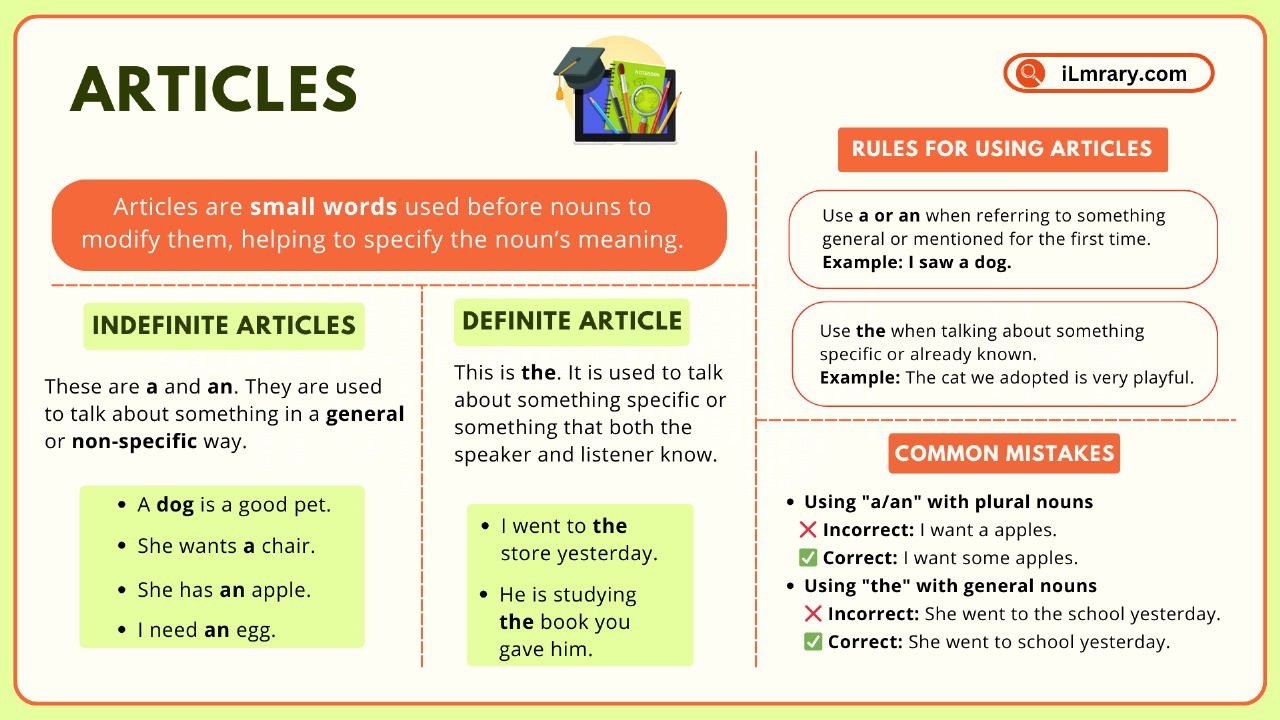Learning reported speech, or indirect speech, is an important skill in English. It helps you express what someone else has said in your own words. By understanding the rules and seeing simple examples, you’ll find it easier to use reported speech in your daily conversations and writing. This will make your English sound more natural and improve your overall confidence.
Contents
What Is Reported Speech?
Reported speech is how we convey what someone else has said without repeating their exact words. It is a useful way to share information and is commonly used in both written and spoken English. When we share someone’s words with others, we can do it in two ways:
1 – Direct Speech:
Direct speech is when you repeat the exact words spoken by someone, without any changes. It’s like quoting someone and requires quotation marks in writing to indicate the spoken words. Furthermore, this method keeps the original wording intact, preserving the speaker’s tone and intent.
Therefore, direct speech is often used to recount conversations, express emotions, or highlight a specific statement.
For Example:
- He asked, “Where are you going?”
- She said, “I am learning English.”
- She said, “Please open the window.”
2 – Indirect Speech:
Indirect speech involves paraphrasing what someone said, rather than quoting them directly. The wording changes slightly to fit into the flow of the conversation or narrative, but the meaning stays the same.
Moreover, this method often uses words like “that” to connect the reporting verb and the reported statement, and it adapts the tense, pronouns, and time expressions based on the context. So, indirect speech is widely used in both casual and formal communication to summarize or report information effectively.
For Example:
- He asked where I was going.
- She said that she was learning English.
- She asked me to open the window.
Rules for Changing Direct Speech to Indirect Speech
When converting direct speech to indirect speech, follow these basic rules carefully. Each rule ensures that the original meaning remains clear and accurate.
1 – Change in Pronouns
Pronouns in the sentence often change depending on the speaker and listener. This is crucial for maintaining the proper perspective in the sentence.
For Example:
- Direct: He said, “I love my dog.”
- Indirect: He said that he loved his dog.
Notice how I changes to he and my changes to his.
2 – Shift in Verb Tense
If the reporting verb (e.g., “said”) is in the past tense, the tense of the direct speech usually changes as follows. This is known as backshifting:
| Direct Speech Tense | Indirect Speech Tense | Example |
| Present Simple | Past Simple | He said, “I eat.” → He said he ate. |
| Present Continuous | Past Continuous | She said, “I am cooking.” → She said she was cooking. |
| Present Perfect | Past Perfect | He said, “I have finished.” → He said he had finished. |
| Past Simple | Past Perfect | She said, “I went.” → She said she had gone. |
Not all tenses change, but this table covers the most common ones.
3 – Change in Time Expressions
For Example:
- Direct: He said, “I will visit you tomorrow.”
- Indirect: He said that he would visit me the next day.
4 – Keep the Reporting Verb in Mind
For Example:
- Direct: She said, “It’s raining.”
- Indirect: She said that it was raining.
Comparison Table: Reported Speech (Direct vs. Indirect)
Before diving into the table, let’s briefly recap why it’s important to understand the differences between direct and indirect speech. The table below summarizes the key aspects that distinguish these two forms of speech, making it easier to recognize and apply them correctly in your writing and conversations.
| Aspect | Direct Speech | Indirect Speech |
| Quoting Words Directly | Yes | No |
| Changes in Tense | No | Yes (if reporting verb is in the past) |
| Pronouns Adjusted | No | Yes |
| Time Expressions | No | Yes |
| Example | She said, “I am here.” | She said that she was there. |
Common Mistakes
Sometimes, when we tell others what someone said, we make little mistakes. Even after learning the basic rules, there are some frequent mistakes you should watch out for because sometimes when we tell others what someone said, we make little mistakes.
1 – What is the main difference between direct and indirect speech?
Direct speech repeats the exact words spoken, while indirect speech shares the meaning in a slightly changed form.
2 – Do all tenses change in indirect speech?
No, if the reporting verb is in the present tense, the tense of the reported speech stays the same.
3 – Can I use reported speech for questions?
Yes, but make sure to change the word order and remove question marks.
4 – Why do we use “that” in indirect speech?
“That” helps to connect the reporting verb with the reported statement, making it clearer.
Conclusion
In conclusion, reported speech is a key part of learning English grammar. So, by understanding the rules and practicing regularly, you can master this concept and improve your fluency. Whether you are speaking with friends or writing essays, reported speech allows you to express ideas and share information effectively. Remember to focus on small changes in pronouns, tense, and time expressions. Keep practicing, and you’ll get better every day!
You May also like:


